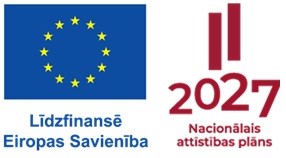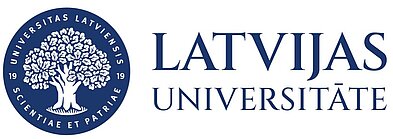

Project title: Development of ecological disinfection equipment using UV LEDs and ozone
Project contract number: 1.1.1.3/1/24/A/051
Project implementation time: 01.09.2025 - 31.08.2028
Total project funding: 656 455.14 EUR, including: ERDF funding – 374 544.00 EUR (77.7%), State budget funding – 89 934.35 EUR (13.7%)
University of Latvia share: 229 759.30 EUR, including: ERDF funding – 178 522.98 EUR, State budget funding – 31 477.02 EUR
Scientific project leader: Dr.Phys. Gita Rēvalde (FST ASI Laboratory of High-Resolution Spectroscopy and Light Source Technology)
Project partners:
• SME Biosan LLC
• Latvian Biomedical Research and Study Centre
About the project:
The project aims to develop an innovative, portable, and eco-friendly disinfection device that combines ultraviolet (UV) light-emitting diodes (UV LEDs) and ozone technology for highly effective sterilisation of various materials and surfaces. Unlike traditional mercury-based UV disinfection systems, which pose significant environmental and health risks due to mercury toxicity, this novel device offers a sustainable alternative aligned with EU regulations for phasing out mercury-containing products by 2027.
The proposed technology integrates UV LEDs with ozone generation to enhance disinfection efficiency. UV-C LEDs (emitting in the germicidal wavelength range of 200–280 nm) are known for their ability to disrupt microbial DNA and RNA, while ozone complements this by penetrating porous materials and inactivating pathogens through oxidation. Synergic use of UV-C and UV-A LEDs also will be explored. The combination leverages these technologies' distinct yet complementary properties, enabling superior disinfection outcomes that are unattainable with either method alone.
The project is interdisciplinary and involves expertise from photonics, material science, and microbiology, represented by three project partners: University of Latvia, Latvian Biomedical Research and Study Centre, and SME Biosan LLC. The project team will collaborate to design, test, and prototype the disinfection device. The device is expected to have wide applications in healthcare, laboratories, and public spaces, addressing the growing demand for safe, efficient, and environmentally friendly disinfection methods.
Project activities:
Activity 2 – Research, which includes at least one of the following research categories: industrial research, and experimental development including sub-activities:
• 2.d1 Characterization and diagnostics of UV LED sources
• 2.d2 UV LED irradiation modelling
• 2.d3 Pathogen inactivation tests with selected UV LEDs
• 2.d4 Pathogen inactivation tests combining UV LEDs and Ozone on various materials
• 2.d5 Design and procurement of materials for a prototype UV LED/ozone box
• 2.d6 Development, construction, and improvement of UV LED/ozone equipment (experimental research)
• 2.d7 UV Testing of UV LEDs/ozone equipment in laboratory conditions
Activity 4 – Dissemination of knowledge generated within the project through training, publications, or know-how and technology transfer
Activity 5 – Communication and publicity activities
Main expected results:
• three scientific publications in peer-reviewed journals (one co-authored with an industry partner),
• a functional prototype of the disinfection device,
• one licensing agreement for technology transfer,
• development of a validated methodology for disinfection using UV LEDs and ozone

 CONFERENCE
CONFERENCE